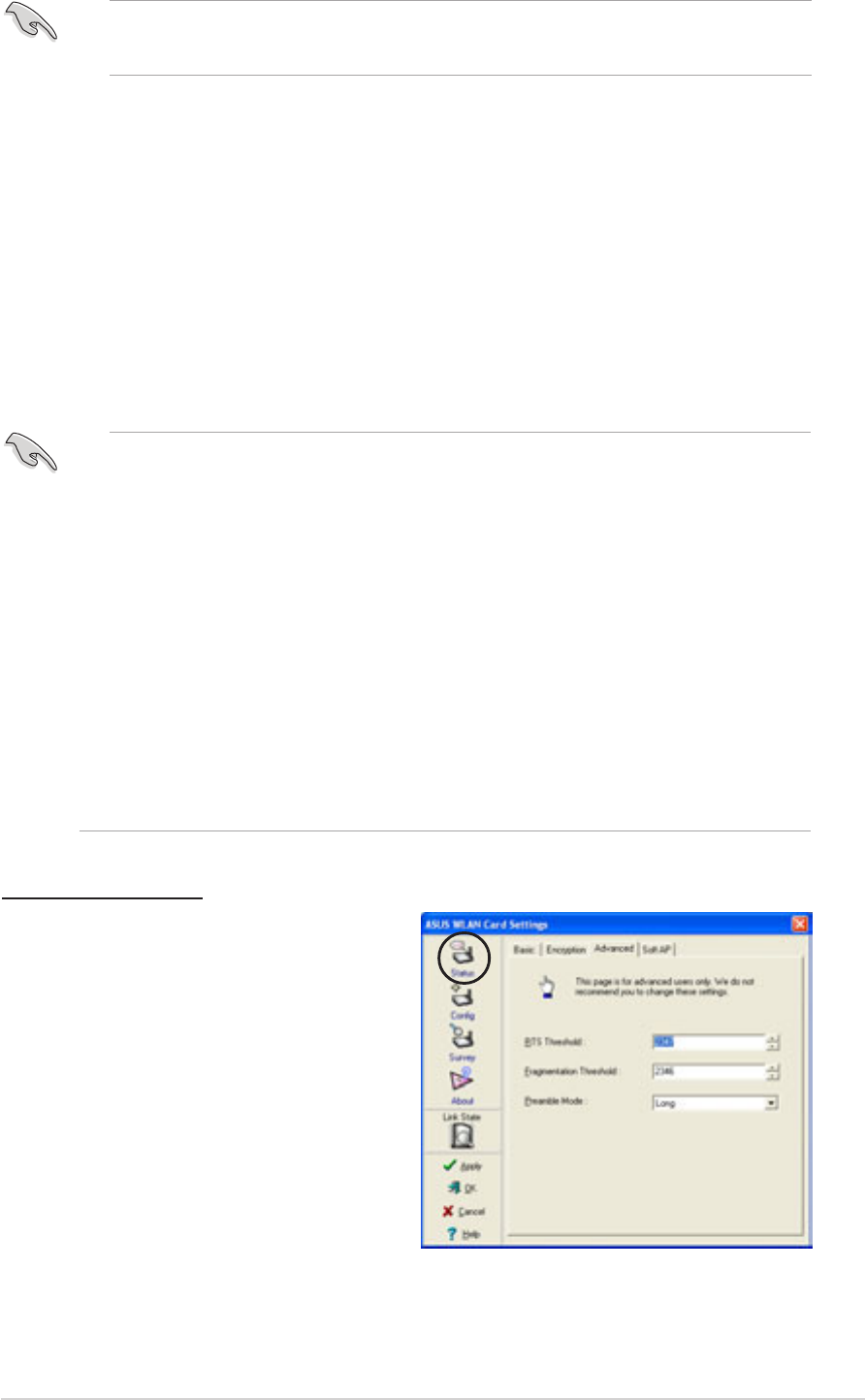
67
ASUS Terminator 2 barebone system
All wireless clients in a network must have identical WEP keys to
communicate with each other or with an access point.
Two ways to assign WEP keys
Manual Assignment. For a 64-bit encryption, enter 10 hexadecimal digits
(0~9, a~f, A~F) or 5 ASCII characters in each of the four WEP keys. For
128-bit encryption enter 26 hexadecimal digits (0~9, a~f, A~F) or 13 ASCII
characters in each of the four WEP keys.
Automatic Generation. Type a combination of up to 64 letters, numbers,
or symbols in the Passphrase field. The Wireless Settings utility uses an
algorithm to generate four WEP keys based on the typed combination.
• 64-bit and 40-bit WEP keys use the same encryption method and can
interoperate on wireless networks. This lower level of WEP encryption
uses a 40-bit (10 hexadecimal digits assigned by the user) secret key
and a 24-bit Initialization Vector assigned by the wireless LAN adapter.
104-bit and 128-bit WEP keys use the same encryption method.
• After assigning the WEP keys, click APPLY to save and activate the
encryption. Manually assigned encryptions are more secure than
automatically generated encryptions.
• Use Manual Assignment instead of Automatic Generation if you are not
sure whether other wireless clients use the same algorithm as that of
wireless LAN adapter.
• Keep a record of the WEP encryption keys.
Config - Advanced
The Advanced tab displays the
wireless LAN adapter advanced
settings. We recommended that you
keep the default settings.


















